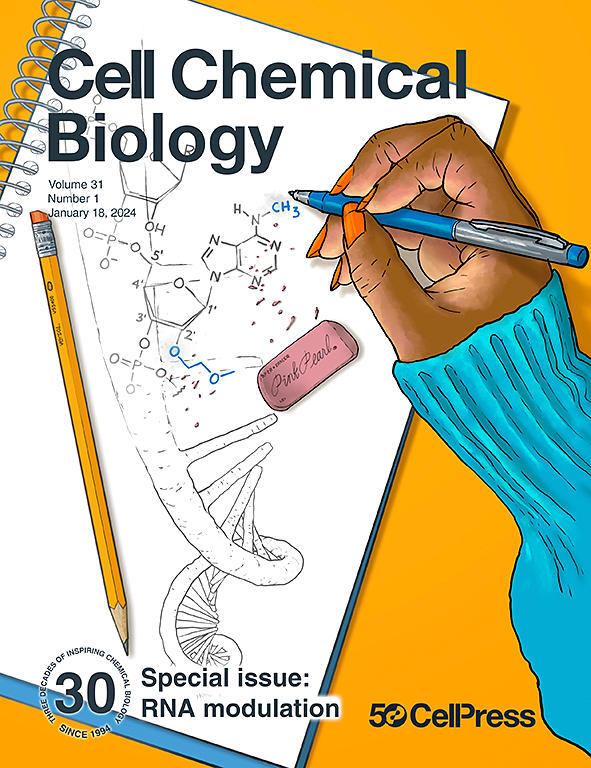激活启动gpcr进行多功能耦合
IF 7.2
1区 生物学
Q1 BIOCHEMISTRY & MOLECULAR BIOLOGY
引用次数: 0
摘要
G蛋白偶联受体(GPCR)调节许多生理过程,它们的激活促进受体与G蛋白、GPCR激酶和抑制因子的相互作用。在这一期的《细胞化学生物学》中,Guo等人1证明了细胞质侧激动剂诱导的紊乱使这种多功能偶联成为可能,揭示了GPCR激活机制的分子基础。本文章由计算机程序翻译,如有差异,请以英文原文为准。
Activation primes GPCRs for versatile coupling
G protein-coupled receptors (GPCRs) regulate numerous physiological processes, and their activation promotes receptor interaction with G proteins, GPCR kinases, and arrestins. In this issue of Cell Chemical Biology, Guo et al.1 demonstrate that agonist-induced disorder on the cytoplasmic side enables this versatile coupling, revealing the molecular basis for GPCR activation mechanisms.
求助全文
通过发布文献求助,成功后即可免费获取论文全文。
去求助
来源期刊

Cell Chemical Biology
Biochemistry, Genetics and Molecular Biology-Molecular Medicine
CiteScore
14.70
自引率
2.30%
发文量
143
期刊介绍:
Cell Chemical Biology, a Cell Press journal established in 1994 as Chemistry & Biology, focuses on publishing crucial advances in chemical biology research with broad appeal to our diverse community, spanning basic scientists to clinicians. Pioneering investigations at the chemistry-biology interface, the journal fosters collaboration between these disciplines. We encourage submissions providing significant conceptual advancements of broad interest across chemical, biological, clinical, and related fields. Particularly sought are articles utilizing chemical tools to perturb, visualize, and measure biological systems, offering unique insights into molecular mechanisms, disease biology, and therapeutics.
 求助内容:
求助内容: 应助结果提醒方式:
应助结果提醒方式:


